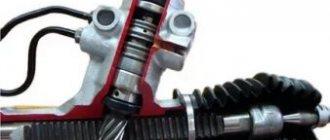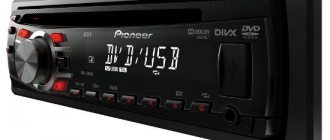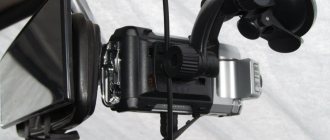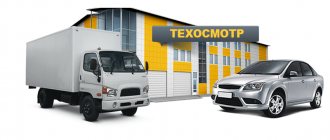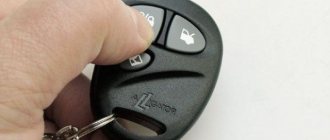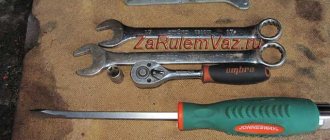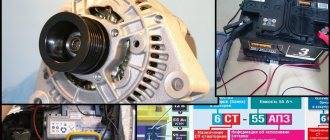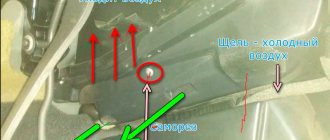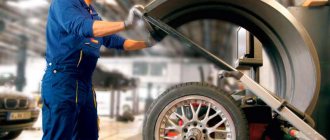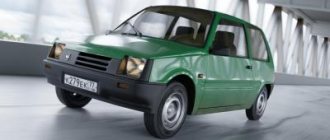Steering rack design
Steering racks of different types have different designs. The following types of slats are available:
- mechanical;
- hydraulic;
- electric.
It is important to consider the type of connection between the strut and the wheelbase (front-wheel drive, rear-wheel drive).
The mechanical structure consists of:
- gear rack;
- gears;
- shaft;
- steering gear;
- tips.
During the rotation of the steering wheel, a force is transmitted to the gear from the shaft, driving the rack. The rack converts rotational motion into translational motion and transmits it to the wheels.
In a mechanical design, the teeth change their pitch from the center to the edges, as a result of which it becomes more difficult to control the steering wheel at high speed and the maneuverability of the car is reduced. Modern cars, which are safe even at high speeds, are equipped with hydraulic and electrical mechanisms.
The hydraulic rack is attached to the body or to the engine - if located in the upper part. If the rail is located at the bottom, it can be mounted on a subframe, beam or body. What distinguishes it from a mechanical design is the presence of a hydraulic booster, which makes it easier to turn the steering wheel when maneuvering at high speed.
The electric rack is distinguished by the presence of an electric motor located on the left side of the vehicle steering unit. The electric model has a higher efficiency compared to its hydraulic counterpart. Its functionality does not depend on environmental conditions. Its design does not include oil seals, gaskets or hoses that require constant replacement due to wear. There is no need to constantly renew the lubricant, like mechanics, which break down every now and then due to a lack of lubricants.
Operating principle of the steering rack
In simple words, this is a device that connects the wheels to the steering wheel. The driver turns the steering wheel and through the steering shaft the force is transmitted to the gear, which rotates the gear shaft and moves the steering rods, and they turn the wheels.
Types of steering racks
There are three types of steering racks in modern cars:
- electrical;
- mechanical;
- hydraulic.
The mechanical steering rack has a simple device. At the end of the steering column there is a gear mechanism that is interconnected with a gear rack, which, in turn, communicates with the steering drive.
A hydraulic steering rack is implemented in most modern passenger cars. Power steering (power steering) increases the return on the effort exerted by the driver, and thereby ensures easy and comfortable driving.
The electric steering rack also improves the driver's response, but for this it uses an electric motor rather than a hydraulic booster.
The steering rack may be positioned differently in different car models. With the upper position of the rack, it is attached to the body and is located behind the engine; with the lower position, it is attached from below to the body, subframe or beam.
Prevention
Like all mechanisms in a car, the steering system requires timely care. In order not to look for information on how to eliminate steering rack knocking, you need to perform a number of operations.
- The first step is to periodically lubricate all mechanisms and monitor the condition of the boot and other protective rubber bands.
- In addition, you need to drive the car correctly, which will help not only the control system last longer, but also the entire chassis. So, in order to extend the life of the chassis and control system, under no circumstances should you suddenly stop and accelerate on uneven roads. At this moment, the wheels are hit with a force equal to the weight of the entire car at enormous speed. In addition, at this moment the driver will not be very comfortable moving like this, because there will be a lot of shaking in the cabin. The best option would be to brake smoothly in front of a hole on the road and smoothly exit it. Firstly, this driving style will help the car last longer, and secondly, it will help save fuel.
- The next thing to do is pay attention to how you stop near the curb. When driving into a parking space, you must not hit the curb. The explanation for this prohibition is that the wheel at this moment receives a strong blow, and all the force goes to the steering system, first of all traction suffers. It should be noted that the rod is also considered an important component in the steering system; it is needed to transfer rotation to the wheels from the steering rack.
- The last thing you need to do to extend its service life is to monitor the condition of rubber products not only in the chassis, but throughout the entire car. In this case, the tie rod is also not left to the side, because it has a tip that must work correctly to ensure that the wheel turns.
When a car is used for a sufficiently long period of time, we involuntarily become witnesses to the appearance of extraneous noise, and one of these cases is a crunching or knocking sound when turning the steering wheel. There can be many options and reasons why such problems arise, and we will try to cover, if not all, then at least the most common of them, in this article.
More recently, we already wrote that knocking when cornering can appear as a result of breakdowns in the rack and pinion steering mechanism. Then this issue was considered a little superficially. Now let's go back to it and try to analyze in more detail the possible reasons that may cause a knock in the steering rack.
Yes, this design is very reliable, but this is only if you operate your car on normal roads. In the case of our “roads”, the word reliability loses its meaning. Therefore, after several years of such driving, there is a fairly high probability of a knock occurring in the steering rack. Sounds similar to knocking or squeaking may occur when you drive on uneven surfaces or when turning the steering wheel. Such breakdowns can affect the control of the vehicle, and as a result lead to an accident.
Causes of knocking in the steering rack:
- It happens that at first glance the steering rack is the cause of the knocking, but in fact it may be the steering rod or steering tip that is knocking. A faulty tip can be identified by a damaged boot.
- A fairly common malfunction that causes knocking in the steering rack is a leak. It may appear due to the effects of corrosion of the secondary shaft, as well as as a result of damage to the seals.
- Over time, the distance at the points of contact of the rack shafts (between the teeth) may increase and, as a result, backlash may appear. When you overcome an obstacle, due to their contact, a muffled knock appears in the rack.
- A malfunction of the steering rack may be associated with the transition of an element such as the secondary shaft centering sleeve to an unusable state.
- A knocking sound in the rack may be caused by play in the input shaft bearings.
If we are talking about a simple replacement of anthers, then almost any motorist can do such work. Replacing the remaining elements of the steering mechanism is a more complex job, which, in addition to experience, also requires the availability of the necessary equipment. Work of this nature requires very high precision execution.
If you want to increase the service life of the steering river, follow several rules:
- Try to refrain from sudden braking. When parking, you do not need to use the curb as a bump stop; stop the car before reaching it.
- You should not “fly” over speed bumps pretending that you don’t notice them. Do not ignore potholes and problem areas of the road, overcome them carefully.
- Do not ignore even the smallest changes related to the operation of the steering rack. When a knocking noise appears or you suspect that something is not working correctly, it is better to carry out preventative maintenance on this mechanism once again. There is a high probability that you will be able to prevent more serious damage to the steering mechanism.
- Always check the condition of the boots and seals. If a replacement is needed, replace it. This will cost you a much smaller amount than a major overhaul.
Following these simple rules will help you almost completely prevent steering rack knocking.
We examined the appearance of extraneous noise associated with breakdowns in the steering rack. But besides this, there are other reasons for crunching, squeaking or tapping.
Causes of knocking and ways to eliminate them
- Problems with the ball joint. If you overlook this problem, in the future the support may completely rupture, which is why the wheel will take a position unsuitable for driving and you will have to call a tow truck to further transport the car.
- Problems with the grenade. This part should also be replaced if problems arise in its operation. Do not forget that when turning to the right, the left grenade is under load, which in turn, when a knock occurs, indicates a malfunction of the left grenade and vice versa.
- The cause of the knocking may be the stabilizer bushings. This problem has a simple solution. You will need to use silicone lubricant (spray the bushings). The creaking or tapping will go away due to the fact that the elasticity of the rubber will increase.
- The steering rack is loosened. In this case, vibration from it can be transmitted to the steering wheel. The steering rack mounts should be tightened.
- Loose engine crankcase protection. Quite a rare case, but worthy of attention, since an overlooked problem can cause quite serious problems. The necessary bolts should be checked and tightened. In the case of a broken thread, you need to replace the bolt with a new one.
- It happens that after replacing a wheel a knocking noise may appear. In this case, the first thing you should check is whether the mounting bolts for this wheel are properly tightened. If not, then in addition to knocking, vibration may also appear after a while. The solution is to tighten the mounting bolts.
- The knocking noise may be caused by a damaged spring. Lately, problems such as a burst or cracked spring have also appeared more often. The reason here could be either poor quality of the part or bad roads. To get rid of the knocking, you need to replace the spring.
- Leaking or “tired” shock absorber. When you enter a turn and turn the steering wheel, such a shock absorber may simply not cope with the load and sag with a characteristic knock. You need to diagnose and replace the damaged shock absorber if necessary. There are diagnostic options that you can do yourself. Press the wing with both hands with a sharp movement, and then also sharply release. Pay attention not only to the presence of a knock, but also to the number of vibrations made by the car after such actions, both on one and the opposite side.
Signs of a faulty steering rack
Most cars are equipped with hydraulic booster (power steering) or electric power steering (EPS). The main faults of the steering rack are similar in them, but there are also differences, so it makes sense to consider them separately.
Power steering rack malfunctions
Symptoms of a faulty steering rack with power steering are often associated specifically with the hydraulic system - fluid and pump. So, if a hydraulic rack breaks down, the driver will feel:
- Increased effort when turning the steering wheel. In other words, the steering wheel becomes “heavy”, and if you could literally turn it with one finger, now you need to make significant efforts to turn it.
- Regular decrease in power steering fluid level in the expansion tank. This is indicated by a corresponding lamp on the dashboard, fluid leaks under the car or on elements of the engine compartment.
- Knock when driving. It is especially clearly expressed when driving on uneven roads.
- When turning the steering wheel, a strong hum is heard. And the more the steering wheel is turned (no matter in which direction), the louder the noise becomes. Often the hum is accompanied by a slight vibration of the steering wheel.
- After turning the steering wheel, it slowly or does not return to its original position.
- When the car moves straight, the front wheels do not maintain the trajectory, which is why the car “fidgets” along the road.
This is interesting: Idle speed sensor: check, replacement, where it is located
Electric steering rack malfunctions
In general, electric rack malfunctions are similar to hydraulic rack problems, except for fluid leaks. So, when a rack with an EUR fails, it often happens:
- knocking noise when turning the steering wheel;
- biting the steering wheel;
- uneven force on the steering wheel;
- spontaneous rotation of the steering wheel;
- The red steering wheel icon is lit on the instrument panel.
In general, electric rack malfunctions are similar to hydraulic rack problems, but they are caused by slightly different reasons, which will be discussed below. The main problem in this case is water that gets onto the rod or into the rack control unit.
Sounds from the cabin
In modern cars, the steering wheel is not only needed to turn the car. It often houses controls for certain devices, from changing gears to turning on headlights or adjusting the audio system. Therefore, the driver has a natural concern when clicks appear in the steering column when turning the steering wheel. It is typical that the sound comes from inside the cabin from the area of the horn button.
In this case, there is no need to panic. First, you should check the correct installation and condition of the plastic lining of the column. The possibility of plastic deformation cannot be ruled out. A common reason for this phenomenon is a malfunction of individual elements of the steering column switch that produce such sounds.
Sometimes in the front part of the cabin, when you turn the steering wheel, squeaks are heard, similar to shuffling. Their source is hidden under the beep button on top of the speaker. At the same time, the signal for a problem with the airbag in the steering wheel comes on, and the cruise control buttons do not work.
This means that the steering column cable under the airbag is inoperative. It supplies power to the mechanism of this airbag, the horn and some other devices of the car. It could simply be seriously damaged. Some motorists try to fix such faults on their own.
Unpopular reasons for knocking
It would be a good idea to check the anti-roll bar bracket. This part consists of bushings based on metal and rubber, which are turned in different directions and connected by a thin isthmus. Most often it is he who breaks down. On rough roads, on small bumps and on turns, you can hear a knocking sound.
For a correct diagnosis, you need to pull the end of the stabilizer with one hand. This will work better if the wheels are turned to the right.
More on the topic: Hyundai Solaris tire sizes - Size tables
It happens that the motor mounts wear out. The engine moves actively at increasing speeds and on uneven surfaces. At certain moments, he reaches the body with the generator and oil pan. The result is a knock. This source of knocking is rarely guessed at. Many people change the suspension, but replacing the front suspension does nothing in this case.
Anything can knock in cars. For example, washer barrels. If it is poorly secured in place, the race will knock. There are also many other mysterious culprits behind such sounds.
Diagnostics
First you need to make sure there is a problem. To do this, you need to turn off the engine, having first placed the car on the inspection hole. Then you need to turn the steering wheel several times until it stops in one direction and the other.
At the same time, at least two people are needed to determine the malfunction. One will turn the steering wheel, the other will evaluate the work of the rack from below. This will allow you to check for any gaps in the hinges. If the knocking noise remains even after disconnecting the rods and levers, the unit will have to be replaced.
There can be many reasons why the steering rack knocks. Therefore, diagnostics plays a huge role in repairs. The most common knocking noises are the tie rod ends and rods. The main sign of a torn tip is a damaged boot. It is because of this that the ball joint becomes unusable. Diagnosing a broken rod is much more difficult.
This is interesting: The car does not start when the starter is spinning - how to fix it?
Unfortunately, it is difficult to verify that the steering rack is knocking precisely because of traction, because if the car was purchased with mileage, then the previous owner could easily replace the torn spare part without bothering with more serious repairs.
Important! To understand that the steering rack is knocking precisely because of the traction, you need to remove the boot and check the traction for any play.
In most cases, the reason why the steering rack knocks is the bushing. This is part number 7 in the picture. It does not have a rigid fixation and is pushed forward by a spring, which is adjusted by a bolt with a lock nut.
Important! Most service centers, instead of replacing only the bushing, offer to install a new unit.
Most often, such a policy of service centers is associated with a banal desire to make money from the motorist. Indeed, there are parts that change only during assembly. But this is not the case. The bushing for Honda cars is available for public sale. Moreover, you can do it yourself if you have the drawings.
Noise when turning
If you hear a hum when the steering wheel is turned to its extreme (or close to it) position, it means that you need to check the condition of the hydraulic or electric booster and the components of its working system. In this case, a hum may occur even if the fluid level is normal. You need to check the condition of the pump blades (often, over time, the pump’s performance decreases), the condition of its bearings, and the tension of the drive belt.
Power steering fluid leak
Regular leakage is a reason to check the power steering system and its seals. In particular, if the car owner is forced to frequently add fluid to the system’s expansion tank. In this case, a concomitant symptom of a faulty steering rack will be a fluid leak from the line. It can drain directly onto the ground under the car (usually right under the expansion tank) or streaks can be seen on the steering linkage boots.
Often, when a liquid leaks, air enters the system (the system is “aired”). It can be seen by the bubbling liquid in the expansion tank. As stated above, the cause of the leak may be rust on the rack. To get rid of it in the future, it is advisable to use non-standard plastic clamps to tighten the anthers, and their metal counterparts, which provide a higher level of tightness.
Knock when driving in the front axle
In fact, such a knock may also indicate a malfunction in the vehicle’s chassis, so additional diagnostics must be performed. The knock can be either in the center or on the left or right side. In the best case, a knock may indicate a torn traction boot; in the worst case, it can indicate problems with the rods, levers or other elements.
To understand exactly why such a malfunction occurred, it is better to remove and disassemble the rack. After all, the most harmless thing may be a loose adjusting nut or wear of the bushing (when there is a knock on the right), but a more serious problem is wear of the worm pair.
Torn boot on traction
When checking the performance of the rack, it is necessary to pay attention to the integrity of the traction boot. Ideally, it should be intact and the rubber should be elastic. If it is torn and dirt has gotten inside, it must be replaced, lubricant must be added after removing dirt, moisture, and debris from the mechanisms.
Electric power steering rack
To localize faults in the electric steering rack, it is necessary to check the following elements.
Is it possible to pull it up?
I already have a detailed article , but when knocking, you can tighten it up. The thing is that the middle bushing has a special nut. Which allows you to tighten the shaft a little. We take a special key and tighten it. Thus, the worn bushing will be pressed more tightly against the shaft and the “backlash” will be removed. However, there is an edge here; you cannot tighten this nut too much, otherwise the steering wheel will be very difficult to rotate, or it may even become blocked.
However, even with maximum “tightening”, after what time the rack can still knock. There is nothing that can be done here; repairs are needed.
Read also: Niva with independent suspension
Eliminating knocking noise in the steering rack
If there is a knock in the steering rack, this is not a reason to run to a service center and spend tens of thousands of rubles on purchasing a new unit. Sometimes it is enough to simply unscrew the bolt securing the locknut and clean the spring.
Over the years of operation, a huge amount of dirt, rust and other deposits accumulate on the spring. As a result, the part becomes blocked and the bushing stops moving. To restore functionality you need to do the following:
- Unscrew the locknut and bolt (in the figure they are indicated by numbers 8 and 6).
- Remove the spring and bushing.
- Perform cleaning. To do this you will need chemicals and a brush. In extreme cases, you can use regular diesel fuel. But you need to be careful, it can damage the parts. Before cleaning, the spring is coated with lubricant.
- Particular attention should be paid to the bushing. There should be no damage to it; if there is any, the part must be replaced.
- Before installation, the bushing seat must be cleaned. Then the part is lubricated and installed in place.
- Reassembly is in progress.
This is interesting: Symptoms of a malfunctioning throttle position sensor and how to check
At the end of the work you will need to adjust the tightening. To do this, you will need a partner to drive. The tension bolt must be adjusted so that the steering rack does not knock. Once the optimal position is found, it is fixed with a lock nut.
Also, the reason why the steering rack is knocking may be the output bushing. This is part number 11 in the picture. Diagnosing its failure is extremely simple. Play in the output shaft is strong evidence of a malfunction. Replacing it won't be difficult. Just unscrew the old one and install the new one.
A complete replacement of the entire assembly is only necessary when dirt gets inside the rack structure, and this leads to destruction of the shaft and seal. Dismantling begins with releasing the steering tips. You also need to remove the bolts and universal joints. After this the installation is carried out.
Steering rack, how to repair it yourself
Before you repair the gearbox yourself, you need to purchase a new repair kit consisting of a bushing, oil seals and seals.
The work is carried out in the following order:
- we dismantle the gearbox along with the rods in order to properly install the anthers in the future;
- we disassemble the gearbox;
-clean all parts and arches from dirt;
- it is necessary to replace damaged parts;
-check the gear shaft.
For most different makes of cars, the process for removing and replacing the steering rack is similar.
There may be slight differences in dismantling.
Therefore, before dismantling, it is necessary to find out what type of mechanism is available on a particular car.
The mechanism can be with electric booster, hydraulic booster or in the form of a simple rack and pinion mechanism.
For a simple rack and pinion mechanism, first loosen the fastenings of the steering tips, then you need to loosen the bolted fastenings, and then dismantle the universal joint.
If the steering rack mechanism is power-assisted, before dismantling it is necessary to release the high-pressure pipes and drain the working fluid into a clean container.
It will not be possible to remove the gearbox with hydraulic booster on your own, since before dismantling the gearbox it is necessary to remove the car's subframe - this work cannot be done alone.
Repair or complete replacement
If funds allow, then it is worth purchasing new parts, as they guarantee maximum service life. However, the cost of the gearbox is quite high. There is always a temptation to buy non-original parts. Sometimes they will not be inferior in quality to products from the official manufacturer, but there is always a chance to stumble upon a low-quality product.
An alternative option is to make high-quality repairs. To do this, a special repair kit is purchased, and then the oil seals, anthers and other components are replaced. If you have some experience in car repairs, then you can do it yourself. Otherwise, it is naturally recommended to contact a specialized auto repair shop. Repairing a power steering system is difficult, so it must be done by highly qualified craftsmen.
Steering rack price for Lanos
For orientation, we have selected several options for replacing the rack on Lanos. It’s not a fact that it will have to be changed, however, we will know how much you can save if you spend time diagnosing and, in extreme cases, repairing the steering wheel.
- An original GM steering rack without power steering with catalog number 096275011, Korean, will cost $82 (or 2092 UAH) at the 2018 exchange rate. The quality is good, but you can find cheaper and no worse.
- For example, the Czech rack Profit 30418040. Its price is 79 dollars. A little worse in quality, but no crime.
- Lauber, made in Poland, catalog number 668267. This rack has power steering, which is why it is expensive, about $450. There is no point in changing it, just repairing it.
The prospect of completely replacing the rack is not bright, especially since the service station will most likely insist on replacement. No one wants to tinker with the steering wheel of a car of an outdated design; it is not profitable for them. It’s easier to change, but more expensive for us. It turns out we'll figure it out ourselves.
Interesting on the topic: How to change the timing belt on a Chevrolet Aveo T300 quickly
Consequences of a faulty steering rack
Drivers are also often interested in the question of what causes a faulty steering rack, and can it be used in this condition? And to understand the consequences, it is enough to know the function of the steering rack.
That is, the first thing that threatens the failure of the rack is impaired control of the car. And if at the initial stage (when the rack just started to creak and/or hum) it still performs its functions, then if it completely fails, the driver may completely lose control of the car!
If a steering rack malfunction is detected, it is necessary not to delay diagnostics and repair work!
Knock in the steering wheel on uneven surfaces when driving straight ahead
In cases where knocking is heard on the steering wheel when driving over uneven surfaces, this may indicate wear on the bearings of the steering column shaft located in the cabin. This malfunction causes radial play of the shaft, accompanied by knocking. Axial play of the shaft is also possible due to wear of the locking or sealing rings.
In some cases, manufacturers provide the supply of spare parts for inexpensive repair of the dispenser. During the overhaul, related parts, fastening and sealing elements are also replaced, which may still be in working order, but may soon fail and require repeated repair of the unit. On a number of models where disassembly and restoration are not provided, the steering column is replaced as an assembly.
Although knocking noises can clearly appear only when turning, not in all cases this is due to wear of the steering elements. If you hear a knock when turning the steering wheel, you should also carefully check the entire front suspension of the car, the tightness of the protection fasteners, subframe bolts and other underbody elements. Only a detailed comprehensive inspection will help identify the source of the problem, which is not always possible to do just by the nature of the knock.
The steering, along with the car's braking system, are the most important elements that ensure safe driving at any speed and on any road. Therefore, when knocks, clicks and other extraneous noises begin when turning the steering wheel, in any case, you need to sound the alarm and immediately look for the cause of the problem in order to eliminate it. Now we will tell you why a knocking sound may appear when turning the steering wheel while standing still or in motion, and what problems does it indicate?
First of all, you need to clearly localize the place where the knocking is heard, as well as determine the conditions under which it occurs, this will greatly help you in finding the breakdown, the symptom of which is the knocking. In addition, different steering systems may knock in different situations and such a knock will indicate different breakdowns. We list the main causes of knocking when turning the steering wheel:
- wear of the constant velocity joint;
- wear of the ball joint;
- wear of the support bearing of the stabilizer link;
- wear of steering tips;
- the appearance of play in the steering rack and leakage of working fluid from it;
- loose steering wheel nut;
In principle, these are the most common causes of knocking and other noises when turning the steering wheel. But there are also less common breakdowns that cause similar sounds. But we can talk about such special cases only using the example of a specific car model in which such knocks began.
The steering column does not have a very complex design, however, this does not mean that the system is trouble-free and does not require attention. Regular checking, adjustment and restoration of the functionality of this mechanism will help preserve the life and health of the driver, passengers and pedestrians. The knocking noise may be accompanied by the steering wheel beating when braking. Such manifestations can appear unexpectedly and are caused by:
- deformation of system parts;
- looseness of fasteners;
- leakage of working fluid from the mechanism or lack of lubrication in it;
- loosening the ball joint nuts;
- increasing the gap between the gear and the rack;
- backlash;
- weakening the density of connections.
At the same time, there is a kickback on the steering wheel, and this is a problem that needs to be solved. A knocking sound in the column is also possible for other reasons. There are not many of them, as it seems at first glance. Sometimes it is only possible to make an accurate diagnosis when you remove and disassemble the steering wheel. Such sounds appear where the steering parts, instead of fitting tightly to each other, have lost this density.
Often, the detection of a knock when turning the steering wheel is a consequence of misalignment of the steering rack. The malfunction can be removed by tightening it with a special wrench. There are known cases when a knock in the column comes from the electric power steering. Some defects can be conditionally determined visually and by detecting displacements at the joints of the steering column parts.
In this way, a faulty bearing is often detected. However, auto mechanics receive complete information about the causes as a result of professional diagnostics. Only she can specifically indicate where the knocking in the steering column comes from. Sometimes this is a consequence of failure or wear of the bearing located in the steering column bracket, or the needle bearing of the steering shaft crosspiece.
